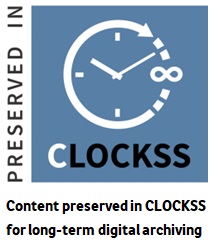Submissions
Submission Preparation Checklist
As part of the submission process, authors are required to check off their submission's compliance with all of the following items, and submissions may be returned to authors that do not adhere to these guidelines.
- The submission has not been previously published, nor is it before another journal for consideration (or an explanation has been provided in Comments to the Editor).
- You must download the journal template and then pour your article into it, while respecting the formal controls described inside the template
- The journal urges researchers to follow the conditions and criteria set out in the American Psychological Association (APA) Publication Guide.
- The text is single-spaced; uses a 12-point font; employs italics, rather than underlining (except with URL addresses); and all illustrations, figures, and tables are placed within the text at the appropriate points, rather than at the end.
- The text adheres to the stylistic and bibliographic requirements outlined in the Author Guidelines.
- Scientific articles must fall within one of the following fields: translation science, linguistics, and terminology, as well as the theme “Texts translated into Arabic.” The journal is also open to scientific articles outside these fields, provided that they belong to the fields of humanities and social sciences, with the caveat that research published "outside the main fields" will not exceed more than five articles in one issue.
- The work should be submitted in a Word file only, and sent to the journal's e-mail: j.translation@democraticac.de
Articles
Section default policy
Privacy Statement
The names and email addresses entered in this journal site will be used exclusively for the stated purposes of this journal and will not be made available for any other purpose or to any other party.







